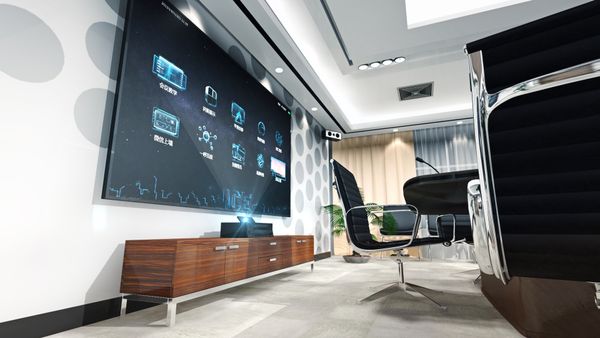Smart TV Security Concerns & 3 Ways to Stay Safe

Smart TVs are growing in popularity, but are still in their relative infancy when it comes to easy, effective security — and with Smart TVs appearing in both homes and businesses at an unprecedented rate, that’s a real concern.
Like any internet-connected device, there is a range of potential vulnerabilities that open up as soon as you go online. Unfortunately, today’s Smart TVs — in the pursuit of convenience (or for a host of other reasons) — may fall far below the level of security that you expect from the internet-connected devices you use the most, like your laptop or smartphone. That said, some manufacturers are doing a much better job than others, so be sure to thoroughly research any Smart TV purchase you’re looking at before buying.
Your Smart TV can be compromised in a number of ways. For example, any device with a web browser can fall victim to a wide range of exploits, including classic phishing scams and the like, so be careful and consider using a more secure desktop browser if you’re trying to do banking or other sensitive transactions. If your Smart TV allows third-party apps, then be sure you install these from approved sites only and check out online to make sure an app is trustworthy. There are also incidents of Smart TVs using outdated software libraries (giving hackers access to known vulnerabilities), allowing root access when they shouldn’t (letting hackers essentially take over your device), storing or transmitting data insecurely (permitting access to your private information), and more.
If you own or are considering a Smart TV, here are three major approaches to how you handle security relative to your TV.
- Don’t connect it to the internet: Problem solved. By not connecting your TV to the internet, you solve your security problem. You’ll also likely be missing out on some key features that made you want a Smart TV in the first place, so this probably won’t work for most people.
- Use a dedicated external device: Apple TV, Roku, and a host of other set-top boxes provide stronger security, easier updates, and other benefits relative to an all-in-one Smart TV. Set up is easier than ever for these devices and all you really need is a spare electrical outlet and an HDMI input to mimic (or, often, improve upon) the Smart TV experience.
- Get your settings right: OK, you really, really want a Smart TV and nothing else will do – that’s fine, just make sure you take the time to set up your device correctly. Unfortunately, the settings and corresponding interfaces on different Smart TVs are all over the map, but here are a few things to look for.
- Software/Firmware Updates: Often these are tucked away where you might not have them front of mind, so turn software and firmware updates on automatic if you can to get the latest security patches.
- Always-On Features: Consider deactivating any always-on features – or, better yet, disconnect the device when you’re not using it – so that hackers don’t have the opportunity to poke away at your Smart TV’s defences 24-7.
- Microphone/Voice: If you don’t really care about or use voice commands or related functionality then turn it off so you don’t have to worry about eavesdropping.
- Camera: You should make sure your TV’s camera is turned off when you’re not using it (hopefully there’s an indicator light) and/or cover the camera with a piece of tape or something to make sure nobody’s peeping.
- Other Settings: Take a good look through all your settings and if you see something that looks like it’d keep more of your personal information from being transmitted to the cloud unnecessarily then consider turning it off (e.g. some TVs will track what you’re watching even though they don’t use this information to provide you, the user, with any extra value in return).
Finally, remember, as with any device that connects to the internet through your router (including the dedicated external devices above), you want to make sure your router settings are properly configured for maximum security as well (including a solid password, updated software, firewall, and other precautions).
Smart TV makers are already addressing vulnerabilities and putting more focus on security, which is great and I’m hopeful for continued progress into the future. Until then, give some thought to what you’re looking to get out of your Smart TV experience and be sure you’re moving forward with the security that you and your family (or business) needs.
tags
Author
Amber Mac is a bestselling author, blogger, keynote speaker, and TV/Radio Host. She started her career during the dot-com boom in San Francisco and has since been at the forefront of reporting.
View all postsRight now Top posts
How to Protect Your WhatsApp from Hackers and Scammers – 8 Key Settings and Best Practices
April 03, 2025
Outpacing Cyberthreats: Bitdefender Together with Scuderia Ferrari HP in 2025
March 12, 2025
Streamjacking Scams On YouTube Leverage CS2 Pro Player Championships to Defraud Gamers
February 20, 2025
How to Identify and Protect Yourself from Gaming Laptop Scams
February 11, 2025
FOLLOW US ON SOCIAL MEDIA
You might also like
Bookmarks








